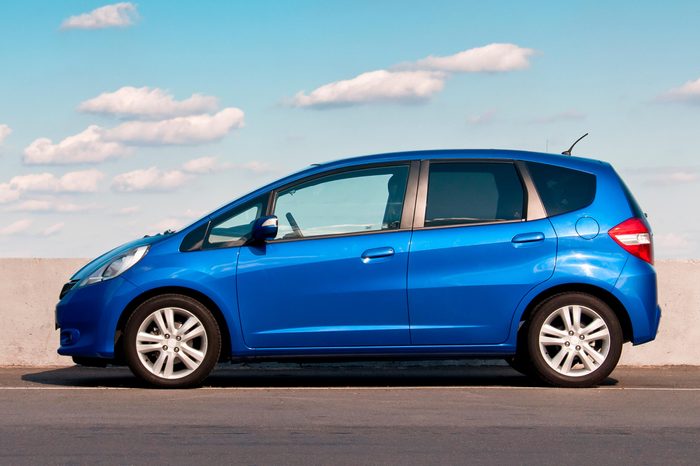
Your car is only worth what someone will pay for it
When it’s time to move on from your current car, you hope that you can get a decent amount to put toward your new ride. But have you looked at an online classified site lately? There are thousands upon thousands of cars for sale at any given time. And a few surprising mistakes might make buyers cross yours off their list—or knock a few zeros off its potential price tag. Whether you’re trying to sell your car yourself or trade it in to a dealer, it pays to make it stand out in a good way and fix the following pesky issues that are hurting its resale value. And before you buy your next vehicle, check out this handy list of which cars you should buy used (and which you shouldn’t).
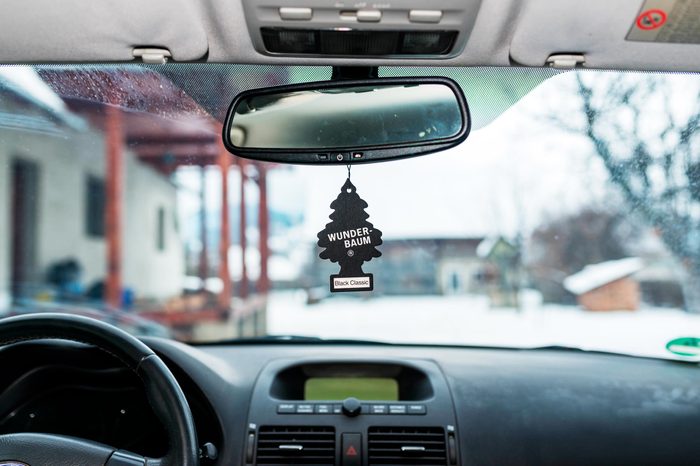
Bad smells
Have you ever walked into a house owned by a cat lover who hasn’t been cleaning the litter box as much as they should? Often, simply opening that front door tells your nose everything it needs to know. Now imagine those awful smells concentrated in a car, whether it’s from a pet, cigarette smoke, or whatever else. According to Michael Sperber, owner of Asheboro Ford in Asheboro, North Carolina, “non-smokers—no matter what—can always smell [cigarette smoke].” And, he adds, that equals “an instant deduction of one to two thousand dollars” off the value of a car. If your car needs a little TLC, take a few hours with a vacuum, vinegar, old rags, and an odor neutralizer to rid the car of any lingering stenches. Here are some other gross smells you can neutralize using items in your pantry.

Bumper stickers
We get it. You’re proud of your kid who made honor roll. Unless you’re selling the car to a family member, however, the next buyer of the car probably doesn’t care—and certainly doesn’t want a bumper sticker that shouts it out to the world. Worse yet are political statements, because you never know what will turn off a potential buyer. The bottom line: Bumper stickers make your car stand out in all the wrong ways to a potential buyer. A car dealer will work to remove the stickers before putting the car out on the lot, but they’ll offer less on your trade-in due to the work needed. Save yourself that hassle and remove the stickers yourself—or better yet, don’t put them on in the first place. These are another 15 things you’re doing to your car that mechanics wouldn’t.
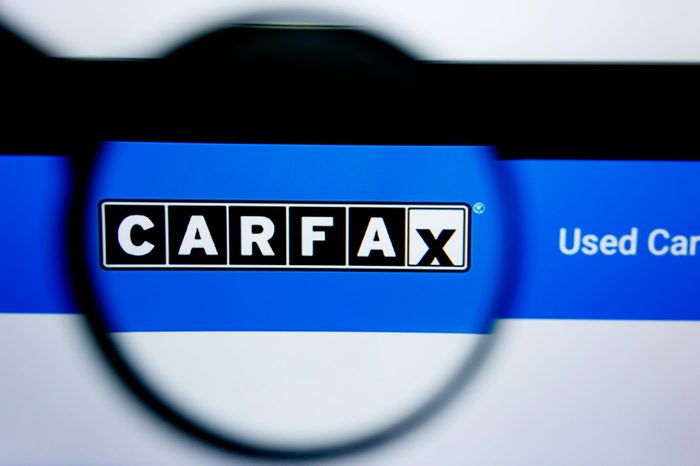
Spotty maintenance history
Other than your home, your car is likely the most expensive purchase you’ll ever make—and also one of the most complicated. Used-car buyers want to know that they’re buying a car that has been properly taken care of. From oil changes to tire rotations to regularly scheduled tune-ups, there should be documentation of all of the work done to your car. Keep all of the receipts in a file folder, and show them to potential buyers to convince them you’ve done everything you can to keep it running in tip-top shape.
If your car had undergone other repairs, don’t forget to include those documents in that sheaf of papers. Buyers can easily run a vehicle history report from any number of online sources such as Carfax.com, so not including those receipts can make a buyer think you’ve something to hide.
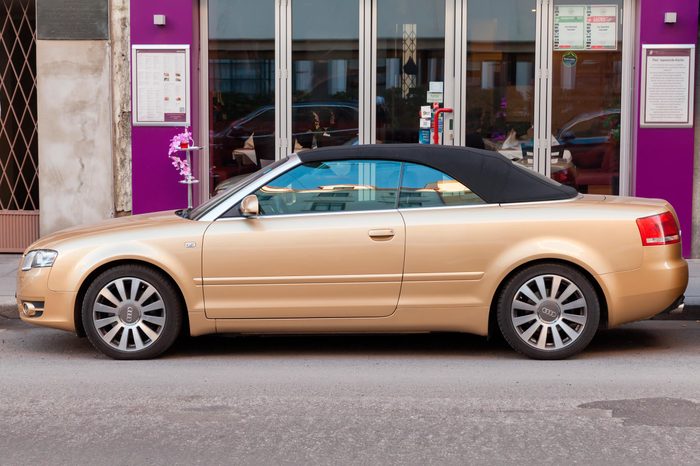
Odd paint color
It’s probably not something you’ll want to spend the money to change, but an unusual paint color can impact the resale value of your car. According to iSeeCars.com, cars painted gold tend to depreciate 37.1 percent over three years—more than a 12 percent difference compared to the average car. On the other hand, yellow cars tend to depreciate much less, only 27 percent over those same three years. While this may not help you with the car you’re selling now, you might want to take these numbers into account when buying your next car. Believe it or not, your car’s color also affects your chances of getting into an accident.
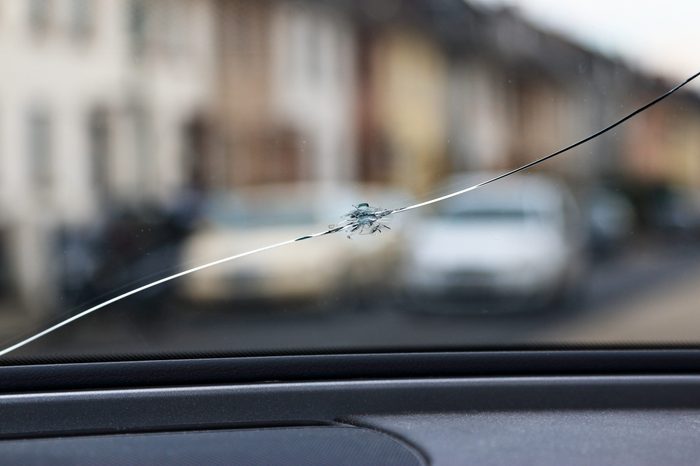
Windshield cracks
In some states, driving with a cracked window is illegal. Whether the laws in your locality apply or not, any sort of damage to the glass can be distracting to the driver, so it only makes sense to take care of chips and cracks as quickly as possible. Car shoppers will quickly notice any cracks, too. Fortunately, most insurance companies will cover a windshield repair or replacement without affecting your deductible, so consider calling the insurer before you go to sell your car. It’s often a quick job, and if there’s no cost to you, there’s no reason not to do it before you sell.
Do you live in the North, where windshield snow and frost are constant winter-morning companions? Check out this trick to defrost your windshield in less than one minute while you warm up with some coffee.
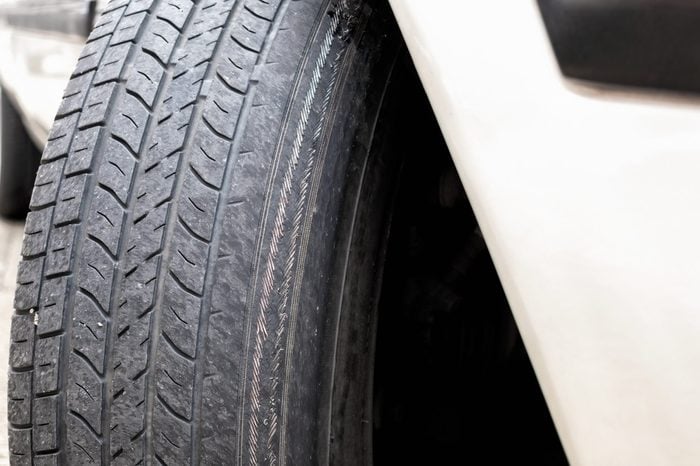
Mismatched or heavily worn tires
There’s a reason that looking at a car for sale is called “kicking the tires.” The saying comes from the early days of motoring, where putting a firm toe into inferior tires might show weakness. Most people looking at a used car will closely inspect the tires for heavy or uneven wear, which can be a sign of neglect or underlying suspension damage. Many will often take note of the brand and model of tires fitted to all four corners. If the tires don’t match, according to Goodyear, the car might handle strangely. As tires are one of the most expensive purchases on a car, shoppers might reject your car or ask for a lower price should the tires need replacing. Here’s why tires are the most important safety features on your car.
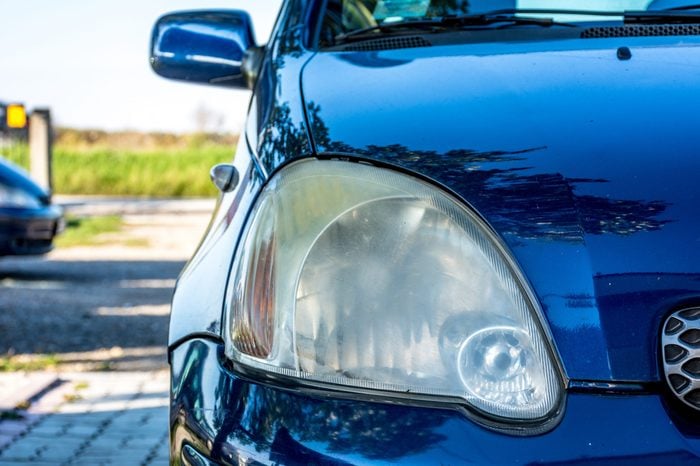
Faded headlights
What’s the first thing you see when you look at a car? The headlights! After all, if the front of the car is its “face,” then the headlights are the eyes. When those eyes look yellowed and faded, the car isn’t as attractive as it could be. Fortunately, those yellowed headlamps can often be revived—and you have a few options. First, there are the commercially available headlight-restoration kits that have a polishing compound and sometimes even a power-tool attachment. Or, if you’re more of a DIY type, you can try a home remedy that includes toothpaste, baking soda, an old toothbrush, and some elbow grease. Once you’re done with the headlights, take a look at all the other amazing things you can do with toothpaste.
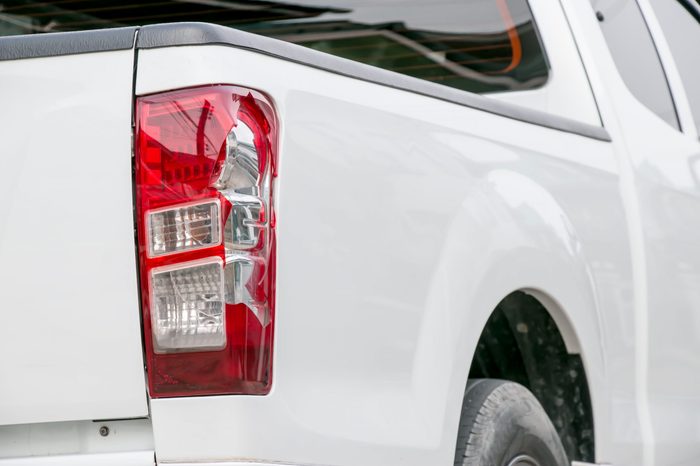
Cracked taillights
Parking-lot mishaps happen. And dealing with an insurance company—and the resulting deductible claim—over an incident where a taillight got cracked is often more hassle than it’s worth. But when you go to sell the car, buyers will notice those plastic blemishes at either end of the car. Fortunately, most lights on modern cars can be replaced with a screwdriver. Others might require a ratchet and socket, but it can be an easy job. Worst-case scenario: If you don’t feel qualified to do the work yourself, just buy the part and find a friendly neighbor who will help you out for a few bucks.
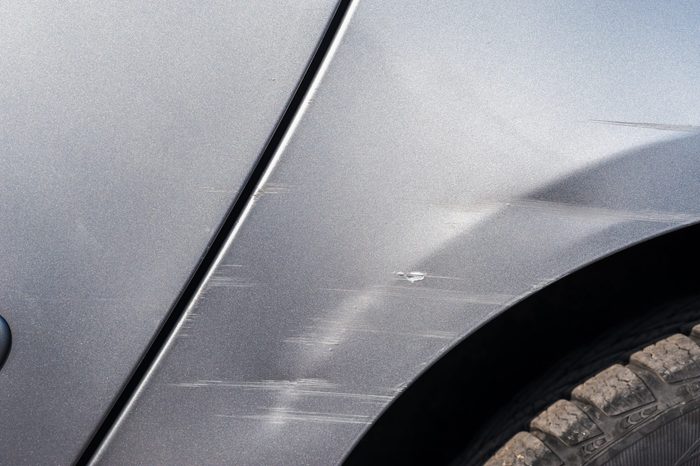
Unrepaired damage
Part of the appeal of buying a used car is paying less than one would for a similar new car. After all, the average new car depreciates by 35 percent in the first three years, according to Autotrader. But while bargain-hunting buyers want to spend less, they don’t want to invest in a car that has all kinds of damage. Sperber notes that he specifically looks at the wheels when he inspects a car. If they have scrapes, that indicates that the car has likely been run into a curb. “On the front wheels, I instantly know to look at front suspension issues,” he explains, since running the front wheels into a curb will often damage critical suspension components like tie rods, wheel bearings, or ball joints. Take a good look around your vehicle and fix anything that looks unappealing.
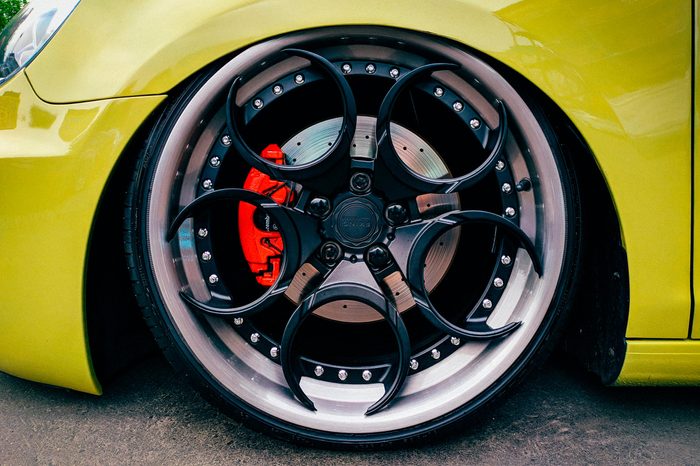
Overly customizing your car
Many people enjoy personalizing their cars to make them just a tiny bit different than everything else in the parking lot. But, much like bumper stickers, one person’s idea of the perfect customization is another’s nightmare. Reversing any modifications like custom wheels, aftermarket stereos, and wild decals will make your car that much more appealing to a wider audience.
Sperber says that tinted windows are often an instant turn-off for potential buyers, “especially the rear window, as it often affects the lines on the rear defroster.” Removing that window tint can often damage that defroster, he continues. Beyond that, he blanches at buying cars with lowered or raised suspension, since he has “no assurance that it was done correctly.” If suspension modifications aren’t done properly, factory warranties are at risk. He doesn’t want to buy a car that doesn’t drive like a new car would—and neither would most people.
